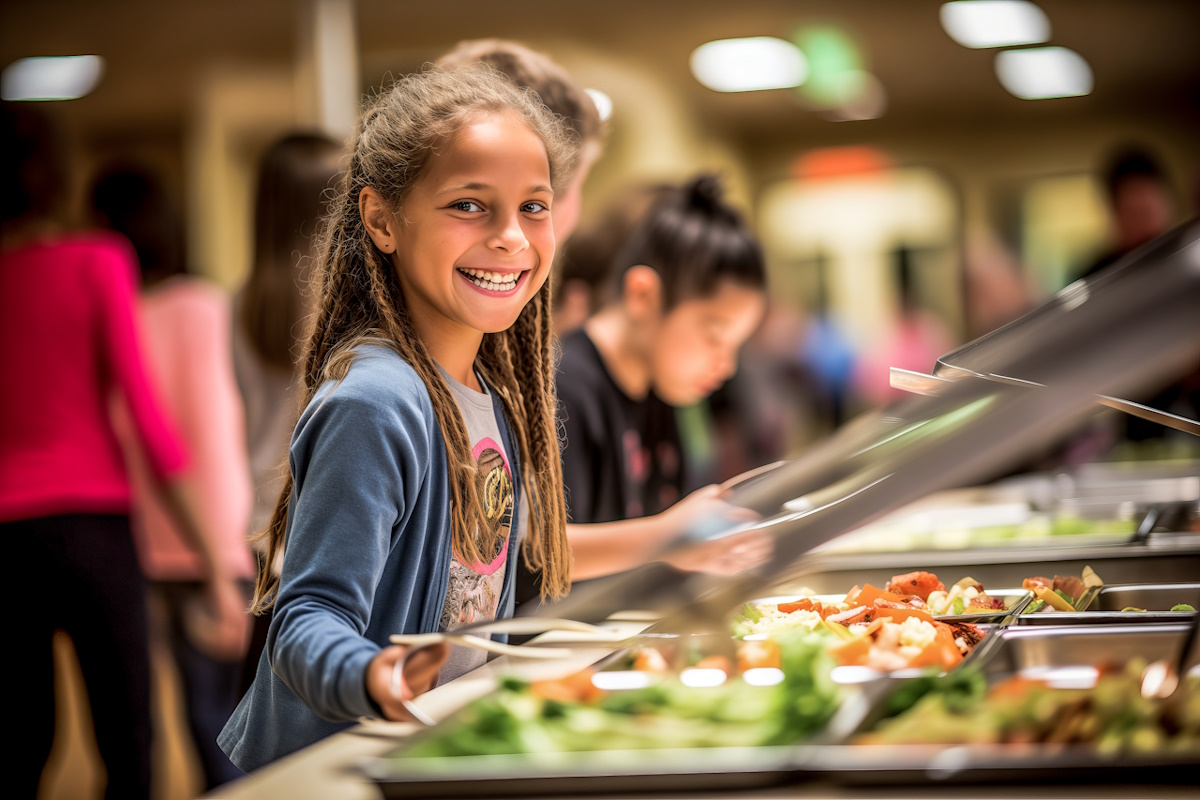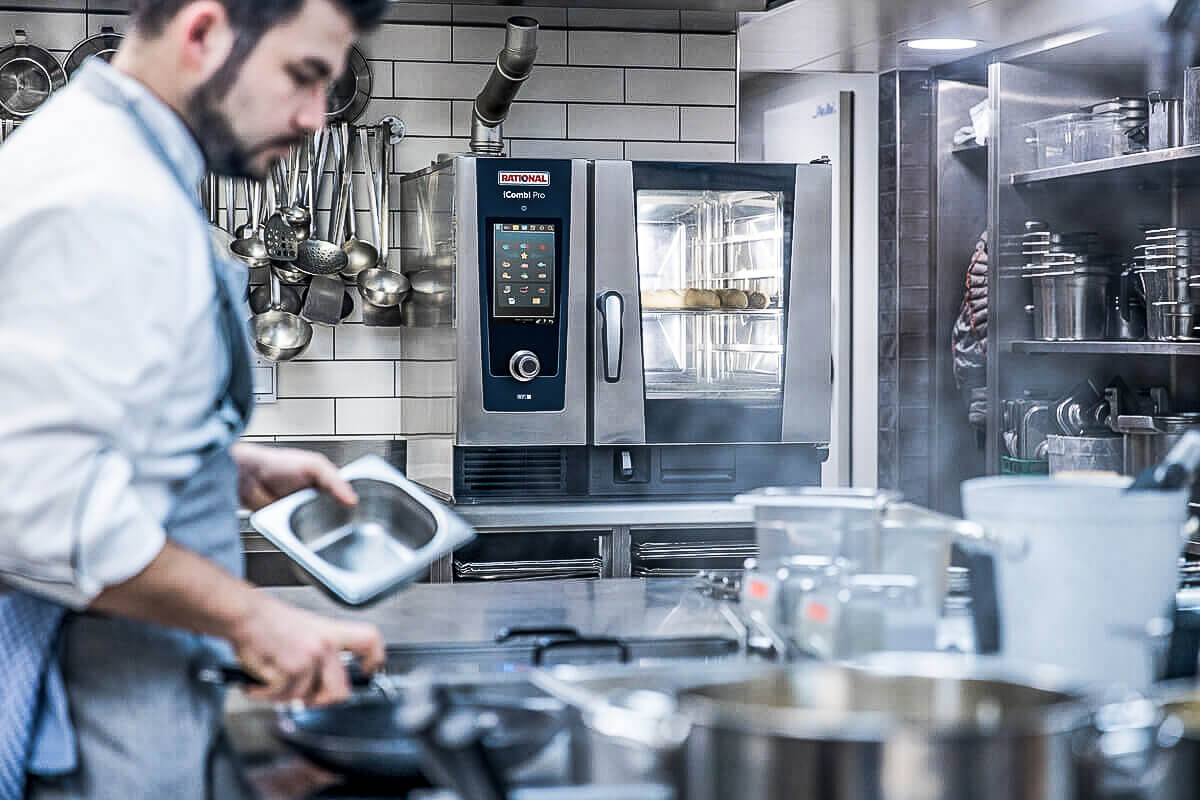What do children in daycare have in common with passengers on a plane? Or students at lunch with patients in a hospital? Or employees in the company restaurant with participants at a high-profile congress? At first glance, you might be tempted to think: nothing. Right? Actually, they are all supplied on site by caterers. This is precisely why it is so difficult to talk about “the” catering industry per se. After all, isn’t it too diverse, too broad, too customer-dependent to be analyzed as a single entity?
Surprisingly, the answer is: no, not at all. This is because, as different as the range and target groups of caterers may be, none of them are immune to the major social developments and trends. New Work, sustainability, a shortage of skilled workers, snackification – the key words of the foodservice industry will continue to have a very specific impact on every caterer, large or small, in 2024. But what exactly does this mean? And why is this year particularly relevant for caterers?
Community catering is good for the planet
Let’s start with one of the most decisive trends for the catering industry this year: the so-called planetary health diet. This type of diet, which was put on paper by over 40 international scientists in 2019, takes a holistic approach. It shouldn’t just be healthy for us humans, but also for the planet.
In other words, it is about a diet that is as balanced as it is environmentally friendly. It shouldn’t just take food moralization into account, but also the increasingly important health aspect. What this means in concrete terms is less meat and fewer animal products overall. It also means more vegetables, more pulses – and more wholegrain products. However, this doesn’t just mean avocados and superfoods from the other end of the world, it also means local or regional food.
“In 2024, caterers’ menus will therefore become ever healthier,” says Martin Wolf, Cattering Segment Director at Rational. “You can also see that large international companies such as Google are driving this trend forward and encouraging companies and caterers around the world to do the same.” Wolf also emphasizes that this trend is dictated by many government authorities. In other words, not just from companies that have a very precise idea of what they want to offer their employees in terms of food. But also from the government side, which – as the Copenhagen model shows – can very well make public and private canteens score points with a more sustainable food offer. And then there are the big caterers who have discovered health and sustainability as a marketing tool in recent years. Like Aramark in the USA.

Image: AdobeStock
Without kitchen technology, nothing will be possible in the catering industry in 2024
Together with the US animal welfare organization Humane Society of the United States, the international catering company has set itself the goal of acting in a significantly more sustainable manner. By 2025, 44 percent of food offered at 250 colleges and universities across the United States will be plant-based cooking. In fact, CO2 emissions are to be reduced by 25 percent by 2030 compared to 2019.
However, this is achieved not just by using fewer animal products, but also by reducing waste – and by making more energy-efficient use of professional kitchen technologies. This is a trend that many other caterers are now making a top priority. “An increasing number of large catering companies are deciding against gas or charcoal grills in their kitchens and central kitchens and are opting for much more energy-efficient steam ovens instead,” says Wolf, alluding to the success of the various models of combi-steamers from Rational.
This not only has advantages in terms of CO2 emissions, it is also a sensible investment in times of widespread staff shortages. After all, multi-functional kitchen equipment can certainly “make up” for missing employees. However, to make ideal use of all the cooking system’s energy-efficient functions for the different daily dishes, you also need suitably trained staff. “Many caterers who are struggling with a high staff turnover will have to pay more attention in future to how they train their new employees as effectively as possible so that they can really get the most out of the cooking system’s technology.” According to the industry expert, a lot will probably happen here both this year and beyond.

Image: Rational
What New Work means for the catering industry in 2024
Also on the to-do list for many caterers: The trend around the snackification phenomenon. “Many caterers see snacks becoming an increasingly important source of income,” says Wolf. Why? New Work. In other words, the new way of working that has become increasingly common since the coronavirus pandemic: when you want, where you want. This means the days when all staff went to the canteen for lunch from noon to one are over.
“Nevertheless, many employees need snacks, even if they only come to the office in the late morning or even afternoon. Caterers can offer profitable solutions here – not least because the profit margin on a sandwich is usually higher than on a plate of the day,” explains Wolf. The solution approaches can take many forms: From gluten-free vegetarian sandwiches in vending machines, which can be bought in the canteen after lunch, to small shops in large company headquarters, where to-go meals are offered, the snackification phenomenon has become the extended revenue arm of lunch this year.
As challenging as this time of multiple crises may seem at first glance for the catering industry, 2024 holds great opportunities for many caterers. It could even be a key year for the catering industry, setting important courses for the future. It is no coincidence that John Zillmer, CEO of Aramark, recently said the following: “For us, this is a time full of optimism.” Perhaps this casual optimism is proving to be the most important trend for the industry.















